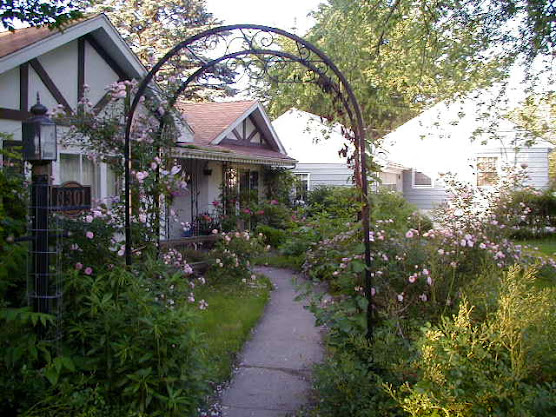Planting for Privacy
By
Amy McDowell
The garden is a place to get away from the
world—to escape from everyone and everything. Shed that cloak of stress and
step into nature’s embrace. Your deck or patio can be an intimate, private
retreat. It doesn’t matter if your neighbors are delightful—you can engage them
in conversation if you choose—but you must create a space in your garden that
is isolated from the outside world.
Privacy fences are tremendously popular
because they create a visual barrier that takes little space and little care.
There are many wonderful plants you may use to create a softer barrier. Here
are a few shrubs to help create privacy in your garden. They are just about as
easy to install and maintain as a fence.
Emerald arborvitae (Thuja occidentalis ‘Emerald’) is a narrow, upright evergreen
commonly used for screening. It creates an attractive deep green backdrop for
other plantings—flowering perennials look stunning in front of arborvitae.
Emerald arborvitae grows slowly, reaching twelve feet tall and four feet wide
at maturity. Pruning is not necessary to keep them looking sharp. Some
arborvitaes suffer winter burn that creates brown patches, but emerald
arborvitae is hardy and durable.
Lilacs (Syringa
vulgaris) form a terrific hedge as long as you have the space for them. The
deliciously fragrant blooms will fill your garden in May. You can find lilacs
that bloom in every shade of purple, pink, and lavender, and even white or pale
yellow. The common lilac grows fifteen feet tall and about eight feet wide. The
best way to prune a lilac is to cut out no more than one third of the oldest,
woodiest branches close to the ground. This will encourage new suckers to
sprout at the base, keeping the overall size reduced and the blooms within
range of your nose, rather than above your head.
Viburnums come in many shapes and sizes.
Arrowwood viburnum (Viburnum dentatum)
is named for its arrow-straight upright branches, and Koreanspice viburnum (V. carlesii) is named for its fragrant
blooms. Arrowwood viburnum will grow to eight feet tall and six feet wide, and
Koreanspice viburnum will mature to about five feet high and wide. Viburnums
have rich dark green foliage and are extremely hardy here in central Iowa. In
addition to these two, there are many other excellent varieties to choose from;
each with its own wonderful characteristics.
Your list of plant choices is blessedly long
and diverse. If your deck is elevated, your site may call for a small tree or a
cluster of them. Imagine your deck or patio embraced in privacy. Picture a lush
green barrier in your mind. Your new plantings may not give you the instant
privacy of a fence, but it won’t take long. Take a deep breath. Soon you will
have that delightful, secluded pocket of heaven in your garden.





